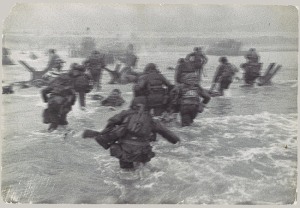So how is the next book going? Pretty well, actually – I finished two chapters last week, and tallied up what I have so far; a little over 400 pages, but only about another two plot twists and set-piece scenes to go. I’ll do my best to bring it at or around 450 pages. A severe re-read and edit will probably shave it down some, at least I hope so. Brevity is the soul of wit and economical story-telling and characterization is a goal devoutly to be aimed for. It has not escaped my notice that Truckee is my shortest book, and also my best-seller over time. Back to basics, eh? Truckee covered the space of a single year, and had a fairly simple, straight-forward plot and a relatively small cast. My subsequent books were a lot more complicated, but it’s pretty clear that elephantiasis of the narrative is not widely appreciated, although there are exceptions. I will do my best to restrain myself.
This next book is supposed to focus on the next generation of the characters from the Adelsverein Trilogy; Dolph and his English Isobel, of Sam and Lottie Becker, and Lottie’s suitor, Seb Bertrand – all of whom were babies, children or just very young adults by a point halfway through the Trilogy. Time for them to pick up the chore of carrying on the plot, in and around the Centennial year of 1876 – although some of the older characters, heroes and heroines of the earlier narrative make occasional appearances now.
1876; a little more than ten years after the end of the Civil War, which I think was a great scar across the American psyche – as 1914-18 was for Europe. Everything was different, afterwards, although many of those things that made the difference so marked had already been put in train before that marking point. Many who had been rich, or even just well-to-do before the war were impoverished afterwards. But many who had been impoverished before were well-to-do or rich after it through mining, wholesale ranching, transportation, manufacturing and developing new and useful technologies. That very technology made the post-war world a different place; the telegraph brought far places closer, the railway brought them closer still. Before the war, it was pork which had been the favorite meat on American tables; ham, salt pork, bacon. Afterwards, beef from western ranches and shipped to the stockyards and slaughterhouses in the mid-West began to predominate.
Before the war, it was a wagon-journey of six months to get to California from the mid-West, or a long, bone-cracking stagecoach ride of twenty-four days. When the transcontinental railroad was completed – a traveler could go from Council Bluffs to Sacramento in about a week and in relative comfort. Should the traveler possess a parlor car and sufficient funds and connections, the journey could even be done in considerable luxury – instead of the dangerous and difficult trek it had been a mere three decades before. I worked in this transition for the last chapter of Truckee; an elderly man who had been a small boy on the emigrant trail in 1844 traveled east over the route that his family had followed – and noted that it wasn’t have the labor and adventure it had once been. The steam engine brought Europe closer to the US; now it was possible to travel relatively easily, and comfortably. Regularly scheduled steamship packet lines transformed a miserable, cramped journey of a month or six weeks (or even more) to barely a week from New York to Hamburg, or Southampton. I pointed up this transition again, in the Trilogy, comparing the hardships suffered by Magda’s family on their journey from Germany on a on a sailing ship – and how, thirty years later, it was only a week on a steam packet from New York to Hamburg. And in the new book, there is a chapter of the Richter and Becker clans traveling across Texas in their own parlor car; think of the change this represented to those who lived long enough to see and experience it! But there was a shadow over all of this; the shadow of the war.
Another author in the IAG has reminded me of this – that someone visiting the United States ten years later would have noted effects of it, most especially in the South. There would have been the ghosts of the dead from a thousand battles haunting the living with their memories; the badly scarred and disfigured, the chronically ill – and the chronically criminal. Even more visible were those amputees with their crutches and empty sleeves, the widows wearing black, and the young women who never married at all because the boy they loved was buried in the Wilderness, at Gettysburg, or Shiloh. Progress came at a price; and although one can’t say one caused the other, it made the handy demarcation point of a life that for most Americans had been rural and agrarian.
And that’s what I am working around, in The Quivera Trail … then there is the difference between England and Texas, which one has to admit, is still pretty marked. There is a reason that I am describing it to readers as ‘Mrs. Gaskell meets Shane.’



Recent Comments